Overall, when it comes to getting women into the boardroom the trends for FTSE 100 companies are positive, with more women overall, more women in executive roles and more companies hitting the Davies Review’s 33% target than in 2018. This is the case for both STEM and non-STEM companies.
STEM companies make up a greater share of the FTSE 100 than 12 months previously. Last year, 53 companies were classified as STEM; this year, the number is up to 62.
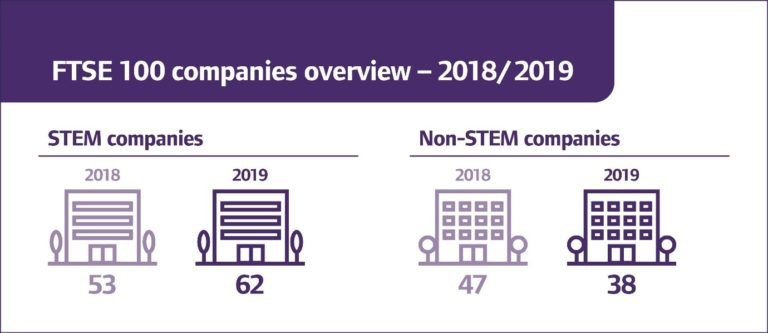
The proportion of STEM and non-STEM companies achieving the target of 33% women on their boards has continued to increase. Almost half of STEM and non-STEM FTSE 100 companies have now reached this milestone – with the gap narrowing between STEM and non-STEM companies.
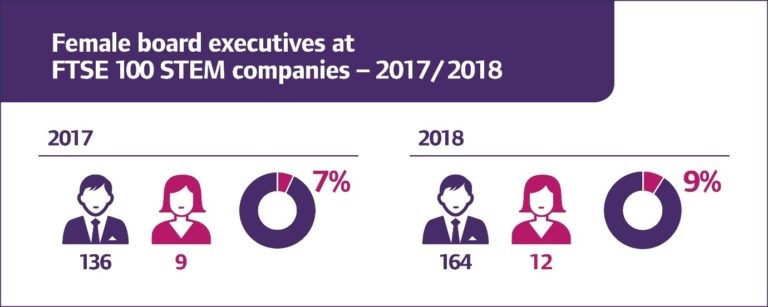
As with 2018, STEM and non-STEM FTSE 100 companies have the same total percentage of board members who are female. In both cases, it’s up to 33% from 30% last year.
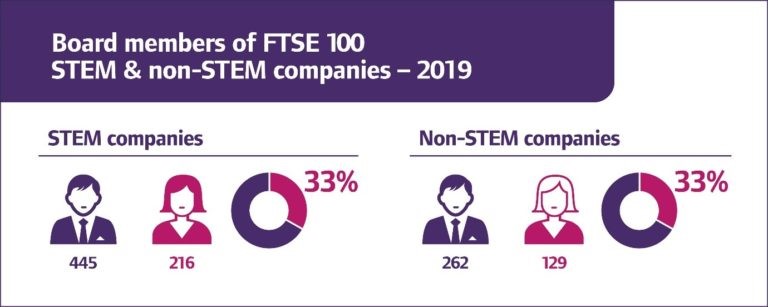
A higher percentage of STEM companies’ female board members are in executive roles than is the case for non-STEM companies. The number of female board members of STEM companies who are in executive roles has increased from 12 in 2018 to 21 this year.
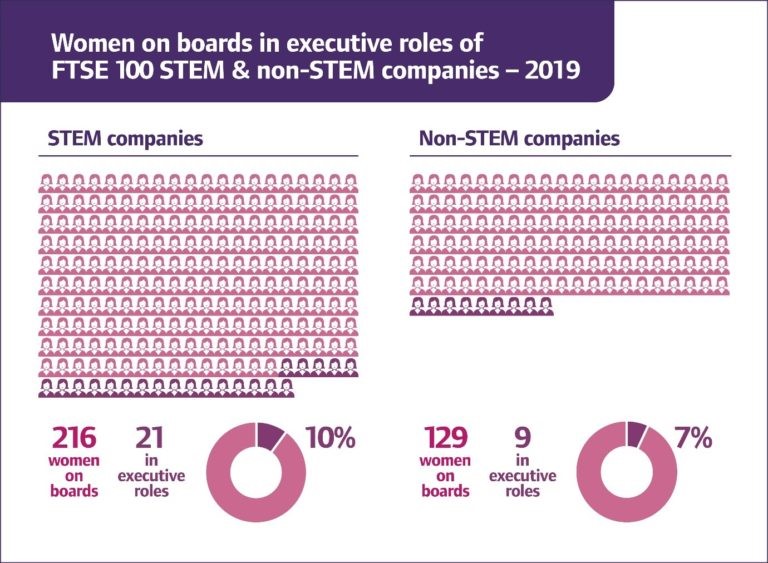
Five of the top ten performing FTSE 100 companies – including the only two companies on the list with a 50:50 gender balanced board – are STEM.
However, eight of the bottom ten performers are also STEM companies, including the worst performing company.
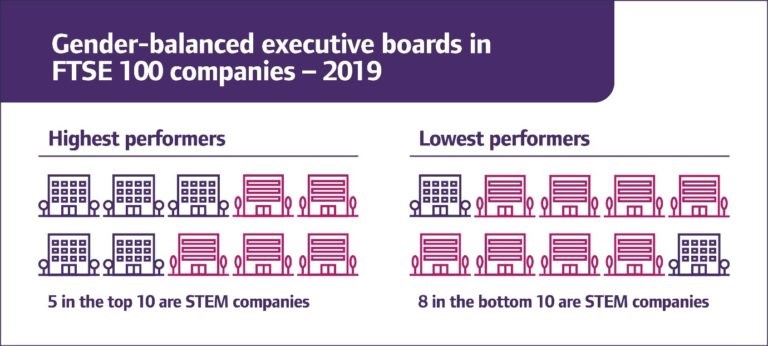
To ensure the percentage of women on STEM companies’ boards continues to increase, and to help more companies to hit the 33% target, it will be important to strengthen the pipeline of women who can take on board-level roles.
Just ten of the STEM companies in the FTSE 100 (16% of STEM companies listed) have achieved the 33% target for women executive committee members and direct reports.
None of the STEM companies which are below the 33% target for women on boards have achieved the 33% target for women executive committee members and direct reports.
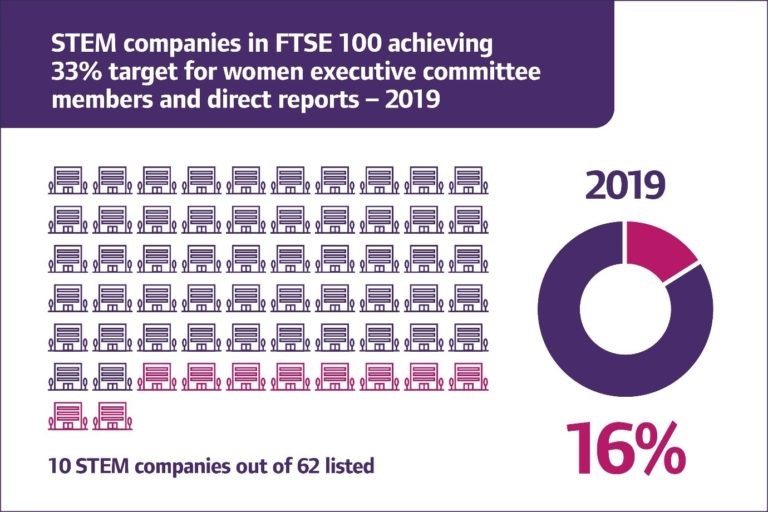
The full 2019 Hampton-Alexander Review of women on boards can be found here.
NOTE: The list of sectors used to determine whether a company is STEM/non-STEM is based on Cranfield University classifications.
